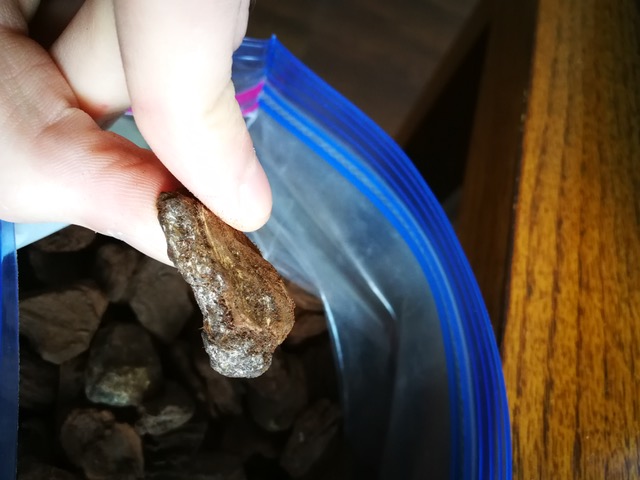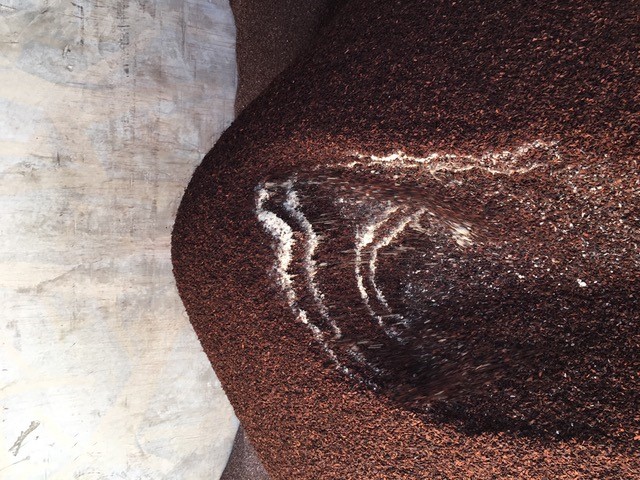Orchiata
Frequently Asked Questions
Question |
Answer |
||
Do I need to wash Orchiata?
|
No, Orchiata does not need to be washed before use; it should be used straight from the bag. Unlike some other bark products, Orchiata:
If you DO wash Orchiata you will wash out the dolomite, which we have added during production as it is beneficial for plant growth. Washing Orchiata will unnecessarily increase labour, while destroying one of the key benefits of the product. |
||
Why not steam sterilise? |
Orchiata should not be sterilised by any means. Often steam sterilisation of bark substrate is used to kill any potentially pathogenic organisms. However, sterilisation of Orchiata will destroy the beneficial micro-organisms. When a sterilised substrate is used, it quickly becomes colonised by new organisms from the environment. These new organisms may be beneficial or pathogenic. Since the substrate has no other organisms growing on it, the new colonisers grow very quickly without obstruction. If a pathogenic organism is first to colonise a sterile substrate then it may grow quickly and infect any plants. By using Orchiata straight from the bag, there will be many beneficial micro-organisms already present in the substrate to prevent pathogenic organisms from growing. It is therefore recommended that Orchiata is not sterilised. |
||
What fertiliser works best?
|
You can use any fertiliser that is suited to orchids in Orchiata. Although a granular fertiliser is less labour intensive, liquid or foliar feed is common especially for Phalaenopsis type orchids. It is up to the grower what they will use for a fertiliser. |
||
I want drier Orchiata; can the Orchiata be dried more?
|
No, we will not artificially dry Orchiata as this can cause problems for rewetting and watering. During production water needs to be added as part of the process. Orchiata will still retain some of this moisture after production; between 40% to 45%. This is beneficial as it is important for the plants that the material has good moisture to start with. |
||
If the Orchiata dries, is it difficult to rewet? |
No; during the processing of Orchiata the outside waxy water repellent layer has been removed allowing the substrate to take up water easily. |
||
Can you water Orchiata too much?
|
With Orchiata, the inner core of the bark is still hard so that it will not absorb too much water. It is very hard to over water Orchiata but you must watch for prolonged wetness. It is important that the material is allowed to dry out before re-watering. This will prevent the growth of wet moulds in the pot. |
||
How can you tell when Orchiata is dry enough to rewater?
|
It is important that you allow Orchiata to dry sufficiently before rewatering. These wet and dry cycles help to control fungi and insect growth which leads to stronger root growth. You can tell when Orchiata has dried sufficiently by either picking up the pot and feeling the weight (a dry pot will be very light compared to a wet pot); or by carefully digging down into the media – the media should be dry for the first 2 - 3cm (in small pots) and 4 - 5 cm in bigger pots. How often you water the orchid will depend on the orchid type, pot type and time of year. |
||
Does Orchiata accumulate salts and need flushing?
|
No; Orchiata is not like other bark based substrates. As Pinus Radiata bark is not soft and spongy it does not absorb additional salts. It only holds enough nutrients on the outside layer of the chip for the plant. To check this you can test the EC of the Orchiata over time. There is no need for flushing; just good water and fertiliser management. |
||
Can you re-use Orchiata?
|
Orchiata lasts a very long time so can easily be used in the next stage potting. You can use the existing substrate when you move up a pot size and simply fill the remaining space with extra Orchiata. However, do not remove the material and then reuse for potting younger plants (e.g. recycling the substrate). This is not recommended as any salts that are in the substrate may be too strong for younger plants. Also if there has been some contamination from disease in the plants, reusing substrates will spread any pathogens. When potting young plants, fresh Orchiata must be used. |
||
Can you plant moss plugs into Orchiata?
|
Orchiata is a very stable substrate and it is recommended that you do not mix other materials with it for growth. However, many growers begin their plants in Sphagnum moss and then transplant into Orchiata. If you start growth in Sphagnum moss you can plant the plugs into Orchiata saving time and labour but you must only use high quality Sphagnum such as New Zealand Sphagnum moss. This is because Sphagnum such as Chinese moss breaks down very quickly and can contain materials that cause pathogen and water problems. NZ Sphagnum moss is more robust, does not break down and can last as long as the Orchiata. |
||
What size pot and grade should I use for my orchids? |
This will depend on the orchid type you are growing and its climate requirements. However most orchids prefer to be restricted in their pot; you must never use pots that are too big. It is also important that the pots that you purchase have appropriate drain holes which allow all water to drain (no pooling). General guidelines are highlighted below; however please contact us if more information is required. |
||
Orchid Type: |
Pot Size: |
Orchiata Grade Example |
|
Small Flask Plant |
3cm plug or 5cm pot |
Classic |
|
Small plant |
7cm pot |
Classic or Power |
|
Can we mix other products like peat moss with Orchiata to increase the moisture? |
Mixing substrates is definitely not recommended. Inconsistent mixing it can lead to inconsistencies in watering, which may cause wet and dry spots within the pot. Orchiata is a good substrate by itself; if other substrates are used there may be pathogens present which could infect the substrate and cause problems for your plants. Some growers add a bit of sphagnum moss for added water retension, but it is not necessary.
|
||
Orchiata Percision 3-6mm (1/4”) |
Suitable
for very young orchids - fresh out of flask - or orchids with very fine roots. Percision is also a very attractive top dressing for bonsai. |
||
Orchiata Classic 6-9mm (3/8”) |
Suitable for young orchids, and a good size for second potting. AFP 55-57%, WHC 55%. |
||
Orchiata Power 9-12mm (1/2”) |
Suitable for young and mature orchids, a good size for second potting. AFP 57-60%, WHC 55% |
||
Orchiata Power+ 12-18mm (3/4”) |
Suitable for mature orchids that require more AFP. AFP 60-62%, WHC 52% |
||
Orchiata Super 18-25mm (1”) |
The largest chip size, used for mature orchids and orchids that require a high AFP. AFP60-62%, WHC 52%. |
||
White Powder on Orchiata |
|
||

 Sometimes, when you open a bag of orchiata you may notice a white power on some pieces. This is usually not anything to worry about. Dolomite is applied to the product after processing and depending on the initial pH of the media, differing amounts are added. This is called buffering. Dolomite is a white powder and deposits will usually be seen on the bark especially if the material is slightly drier or in pockets on bark particles where it has been collected. Dolomite can be identified as it has little smell, can be removed easily with a thumbnail, and when submerged in water it does not repel water. Dolomite deposits are regularly mistaken for fungal growth. For more information,
Sometimes, when you open a bag of orchiata you may notice a white power on some pieces. This is usually not anything to worry about. Dolomite is applied to the product after processing and depending on the initial pH of the media, differing amounts are added. This is called buffering. Dolomite is a white powder and deposits will usually be seen on the bark especially if the material is slightly drier or in pockets on bark particles where it has been collected. Dolomite can be identified as it has little smell, can be removed easily with a thumbnail, and when submerged in water it does not repel water. Dolomite deposits are regularly mistaken for fungal growth. For more information,